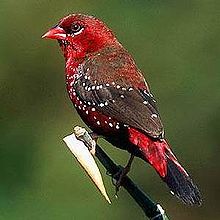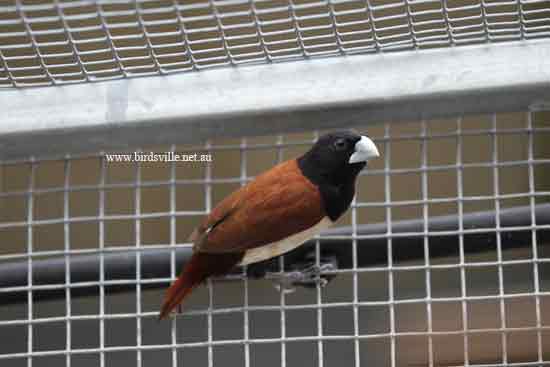Pictorella Manikin information
 Also known as Pictorella, Pictorella Finch, White breated munia
Also known as Pictorella, Pictorella Finch, White breated munia
Natural distribution and habitat
Native to north Australia they inhabit semi arid area’s of open savanna with shrubs and small trees.
Diet for for pictorella finch
Seed– Feed your Pictorella mannikin a good quality finch mix especially if you desire to breed your birds. If you are unsure of the seed you are feeding your birds ask your local bird expert.
Sprouted seed– Always wash thoroughly with aviclens befor feeding to birds.
Greens– include seeding grasses, chickweed, dandelion, broccoli, lebanese cucumber and silver beet.
Live food– Meal worms, fly pupae add with some wombaroo insectivore mix
Vitamin supplements– There are many quality supplements available in Australia
Egg and biscuit formula– Great for pictorella mannikins this can be added to the live food mix if desired
Grit– Supply a finch grit with baked egg shells, crushed shells, crushed cuttlebone, charcoal and limestone.
Fruit– not often eaten by these birds
Breeding Pictorella mannikin
Pictorella Mannikins will nest Finch nest boxes or in low shrubs and bushes. Be sure to supply swamp grass for nesting and feathers to line the nest with.
Both parent’s will build the nest with the hen laying around 5 white eggs with an incubation period of 14 days. Be sure to feed your birds plenty of live food while they are breeding. The babies will venture out of the nest around 4 weeks after hatching and will continue to be fed by the parents for a further 4 weeks while the young learn how to crack seed and eat for them self.
Sexing Pictorella Finches
The female is slightly more dull in colour the best way to sex these birds is with the breast feathers as the white breast feathers have smaller flecks allowing more black to show.
Found in store, for more details call Birdsville 9667 2555. More information coming soon.



